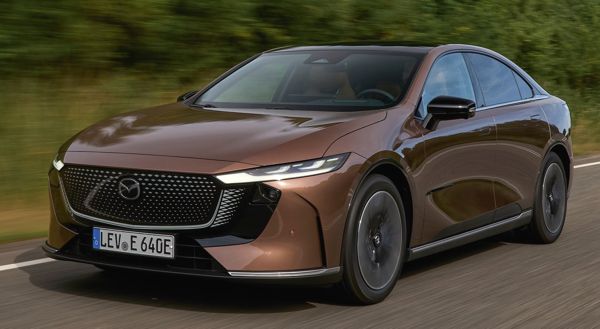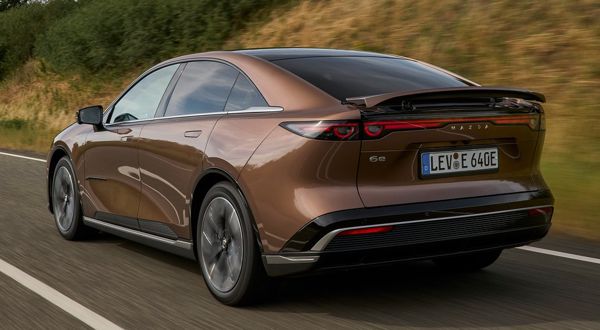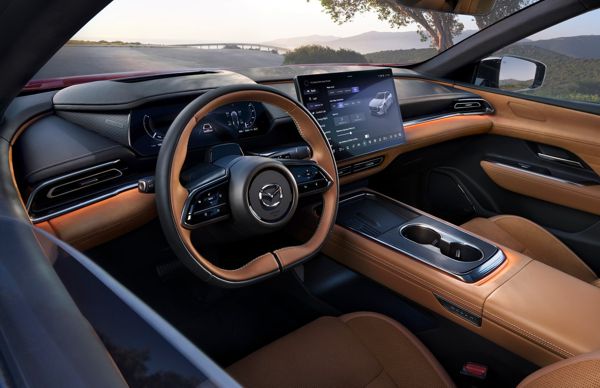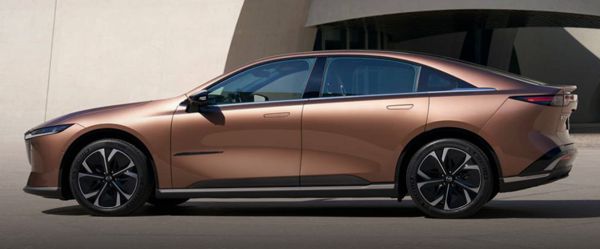Published
on 17
Jul 2025
|
All rights reserved.
|
|
|

|
|
The
Mazda 6 is dead. This one tries to fill its vacancy, but can it?
|
|
It is incredible that the
last Mazda 6 served the world for 12 long years. Born in 2012, it
soldiered until production ended in Japan in late 2024. It was one of
the most dynamic family sedans on the market, also one of the best
looking. Somehow, the market is moving away from sedans to
SUV-crossovers, making a niche player like Mazda harder to survive. As
a result, Hiroshima redirects its development budgets to crossovers,
eventually killing the product line that could be tracked back to the
first 626 of 1978.
However, there is a cheaper way to fill the space left by Mazda 6 than
developing a new sedan. Remember, Mazda has a joint-venture with
ChangAn Automobile in China. ChangAn is one of the largest car makers
in China with an annual sales of over 3 million cars at its peak,
though dropped a little bit now under intense local competition. It
used to rely on its JVs with Ford, Mazda, Suzuki and PSA DS, but in
recent years focuses on building its own R&D capability and its own
brands, most notably Deepal.
In China, Deepal has been selling a “new energy” sedan called SL03
since late 2022. Just like Renault offers its new R5 free to make
Nissan Micra, ChangAn needs additional sales volume from a Mazda
version to spread costs, so it is willing to sell the idea to Mazda.
The car would be engineered by ChangAn and share all the underpinnings
with Deepal. Production is carried out in the JV plant, of course. The
role of Mazda is limited to styling and doing ride and handling tuning
to make sure it looks and feels like a Mazda. To Mazda, there seems to
be nothing to lose. Deal done.
In late 2024, the new Mazda EZ-6 went on sale in China. Mechanically it
is the same as its Chinese cousin. There is a choice between pure
electric power or range-extender EV. The car is marketed as a mid-size
sedan targeting at Tesla Model 3, BYD Seal and many other local
offerings, but is made larger at almost 5 meters long and 1.9 meters
wide, accompanied with a 2.9 meters wheelbase. Power, however, is
modest, as is battery technology, so it is not expensive.
Earlier this year, the car lands in Europe under the new name 6e. Note
that there is a space between Mazda and 6e, unlike the previous Mazda6,
so you can say it is not exactly a successor to the latter. Anyway, by
the time you finish reading this article, you will get the same
conclusion.

|
|
It
even features an active rear spoiler, which is a pure gimmick for a
family car.
|
|
Thanks to a Mazdasque long nose, the 6e or EZ-6 looks quite stylish.
Moreover, given the generous length and a fastback tail, it looks sleek
for something riding on a skateboard EV platform. The use of frameless
windows and blackened B-pillars enhance the coupe feel further. It even
features an active rear spoiler which raises from the tiny tail, which
is a pure gimmick for a family car I would say, though I like that.
The rear spoiler is actually mounted on a liftback tailgate, which
opens to a shallow load bay. Boot volume is quoted at only 336 liters,
although it seems larger. Up front, there is a 72 liters trunk like
Tesla.
Open the doors, you will find a premium-looking cabin, at least on
upper trim models. Most surfaces are upholstered with leather or suede,
which feel nice to touch. Space seems to be abundant given the generous
wheelbase and width, but when a 6-footer rests at the back, he will
find the sloping roofline eats into his headroom, while the underfloor
battery has his legs raised, so that is not exactly a comfortable place
to spend hours of journeys.
The dashboard is dominated by a 10.25-inch digital instrument and a
massive, 14.6-inch touchscreen. Otherwise, the cabin design is plain to
the extent of dull. Disappointingly, Mazda’s tactile switchgears –
including the i-Drive like rotary control – has been banished.
Everything has to be controlled through the touchscreen. The user
interface is not as poor as some BYDs or MGs, but the main screen is
still a mess, crowded with lots of functions without prioritizing the
more useful ones. You may customize it to your liking, but the fact
that the level of regenerative braking is buried deep inside the menus
is appalling. European rivals are much smarter by offering a physical
pedal.
The driver seat is quite comfy and supportive, although you sit a
couple of inches higher than desired due to the battery underneath.
Rearward visibility is almost nonexistent as the rear screen is
super-shallow – and that’s before the rear spoiler is raised. Now I
understand why Polestar simply ditches the rear glass. Rear quarter
view is not much better, as the C-pillars are thick and the rear
quarter windows are so tiny. In short, the Chinese-engineered Mazda
looks great, but it doesn’t work as well as the Japanese original.

|
|
Mazda’s
tactile switchgears – including the i-Drive like rotary control – has
been banished for a touchscreen-heavy layout.
|
|
Although the 6e has been retuned for European roads and added a long
range battery, it is still much the same car as EZ-6. All models use a
single rear motor to drive the rear wheels, with no ambition for a
performance version. And the motor is not particularly powerful either.
Depending on battery, it produces between 218 and 258 horsepower, and
all versions make a peak torque of just 236 pound-feet. This easily
puts it at the bottom of the competition in terms of performance. 0-60
mph takes more than 7 seconds, and top speed is really low at 109 mph
(175 km/h), oh…
Battery performance is not great either. The entry-level European 6e
employs a 68.8kWh LFP battery made by CATL. No matter range (298 miles
on WLTP cycles) or charging speed (165kW) it is unremarkable compared
with the likes of Tesla Model 3, Polestar 2, BMW i4 or Hyundai Ioniq 6,
let alone the new Mercedes CLA with 800V battery and 320kW charging.
Upgrading to the long-range model doesn’t help much. It employs an
80kWh battery produced by ChangAn’s subsidiary. Although using NMC
chemistry allows it to weigh the same as the smaller LFP, its poor
performance is reflected in an appalling charging rate of only 90kW,
which takes 47 minutes or double the time to charge from 10-80 percent
full. Besides, the ChangAn battery offers less power than the smaller
LFP, at 245 hp versus 258 hp. This means the long-range car is actually
slower than the base model. Meanwhile, its WLTP range improves to only
343 miles, trailing the long-range versions of Tesla, Polestar and
Volkswagen ID.7 by a long way. No wonder Mazda is not eager to promote
it. All the test cars in launch events are installed with the smaller
battery.
That’s for the European 6e. For China market’s EZ-6, the long-range
battery is not even offered. Instead, a smaller, 56.1kWh LFP battery by
CATL comes as the entry-level offering. We don’t believe China’s CLTC
test cycles, but it should return about 240 miles WLTP or less than 200
miles in the real world, so you’d better to overlook it.

|
|
Its
faint trace of dynamism ultimately fails to convince those admiring
Mazda.
|
|
The Chinese market EZ-6 also offers range-extender options. It fits the
“frunk” with a
95hp 1.5-liter four-cylinder engine which works solely as a generator
to supply the rear motor or to recharge the battery. The latter is much
smaller than those on the pure-electric models at either 18.9 or
28.4kWh. The larger battery might give 100 miles of WLTP range, while
fuel tank adds several hundreds more.
No matter which powertrain options, the EZ-6 and 6e are slow for a
D-segment electric saloon, certainly not live up to the zoom-zoom
slogan of Mazda6. The electric powertrain is generally smooth and well
mannered, but throttle response is too slow to excite.
As for ride and handling, the story is similar. The car is engineered
to be comfortable and easy to drive. Noise insulation and refinement
are quite good. The Chinese version EZ-6 runs a softer suspension setup
for smoother ride at the expense of body control. European 6e adopts
stiffer setup to cut body lean and try to inject a bit of dynamism into
the chassis. To certain extent it succeeds. The car’s 47:53 weight
distribution and low center of gravity contribute to a stable and
well-balanced platform. Rear-wheel drive and limited power don’t invite
understeer, while brake pedal is well calibrated to avoid abrupt
response. Unfortunately, the steering lacks a sharp turn-in response,
and it refuses to flow back information from the front wheels. Switch
to Sport mode just turns the steering from light to heavy without
adding any feel, thus it fails to replicate what a proper Mazda should
steer like. Meanwhile, the stiffer suspension setup turns the ride to
harsh on poorer roads. The lack of adaptive dampers doesn’t help, but I
suspect if Mazda’s engineers were given the chance to rework the
suspension hardware from ground up, they could have turnaround its ride
and handling.
As it is, the Chinese-built Mazda sedan is not a real Mazda in any
sense. Its faint trace of dynamism and striking looks ultimately fails
to deliver in engagement and performance, and impossible to convince
those admiring Mazda.
|
Verdict:    |
|